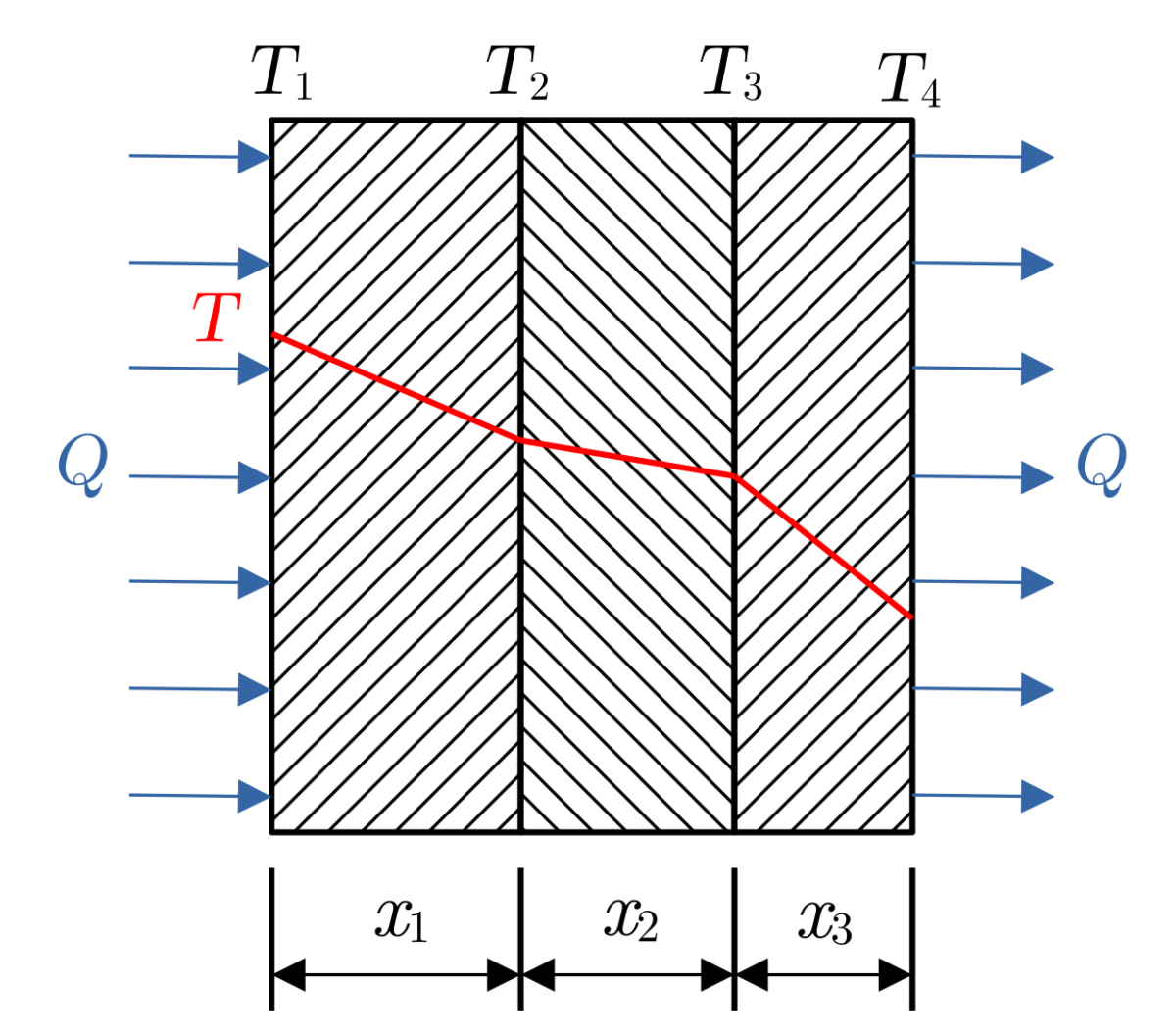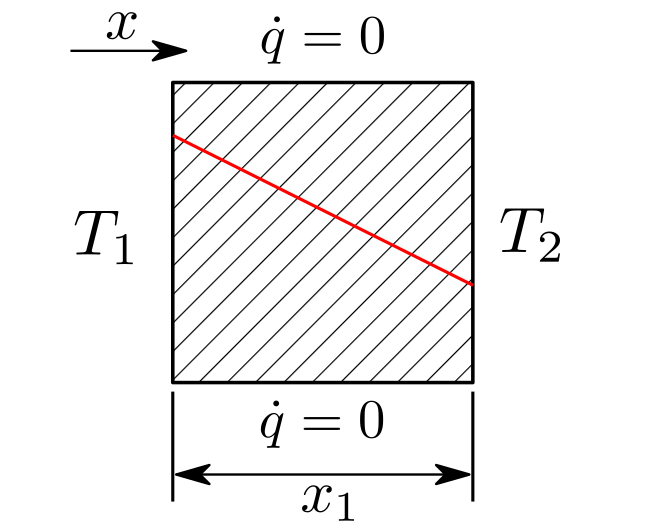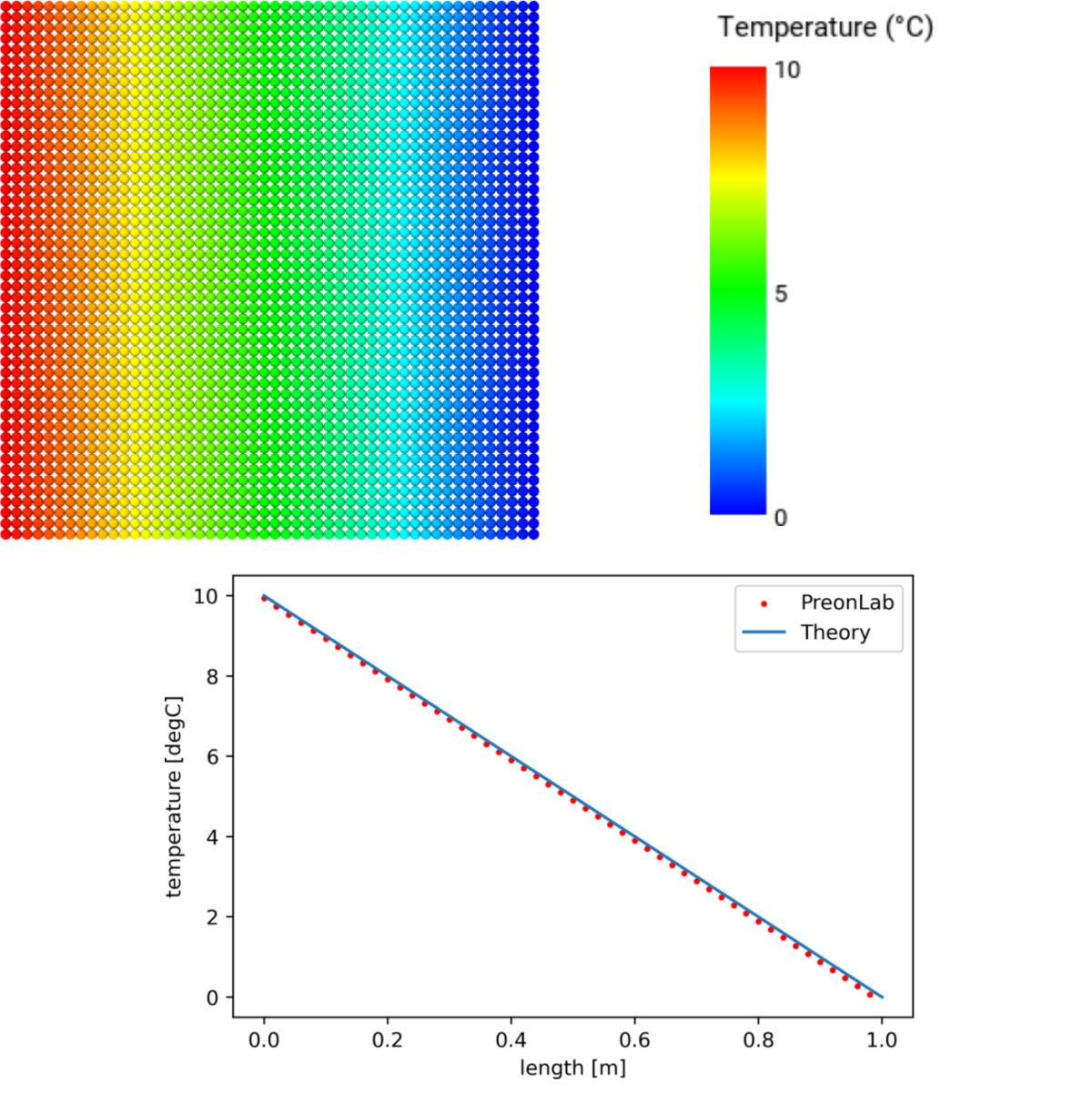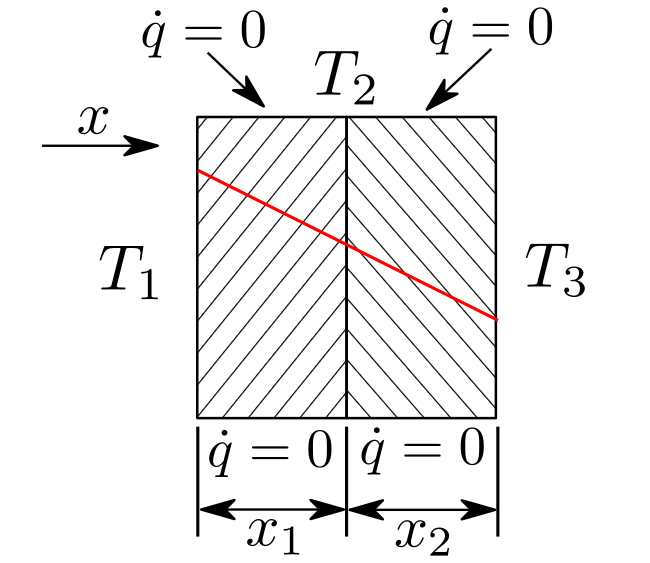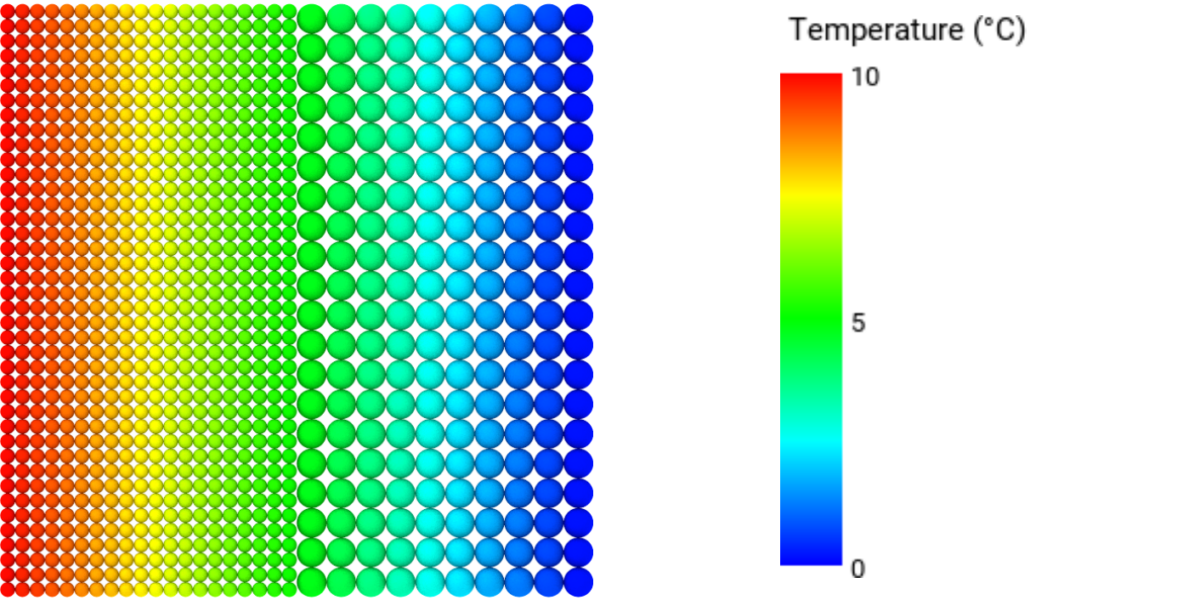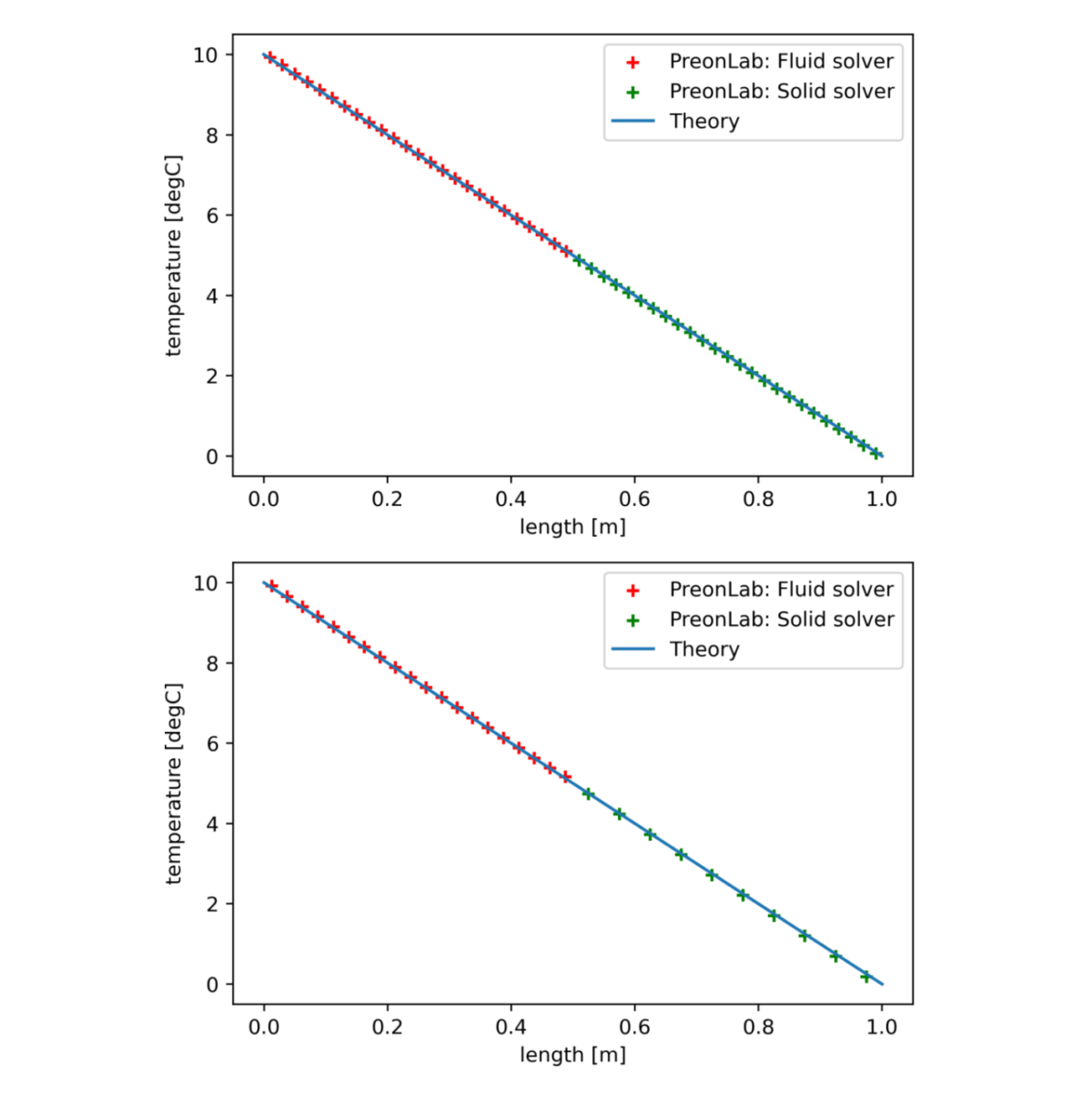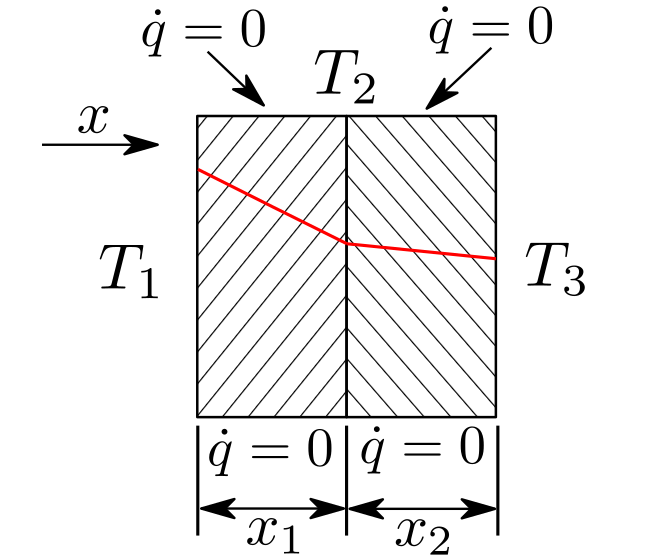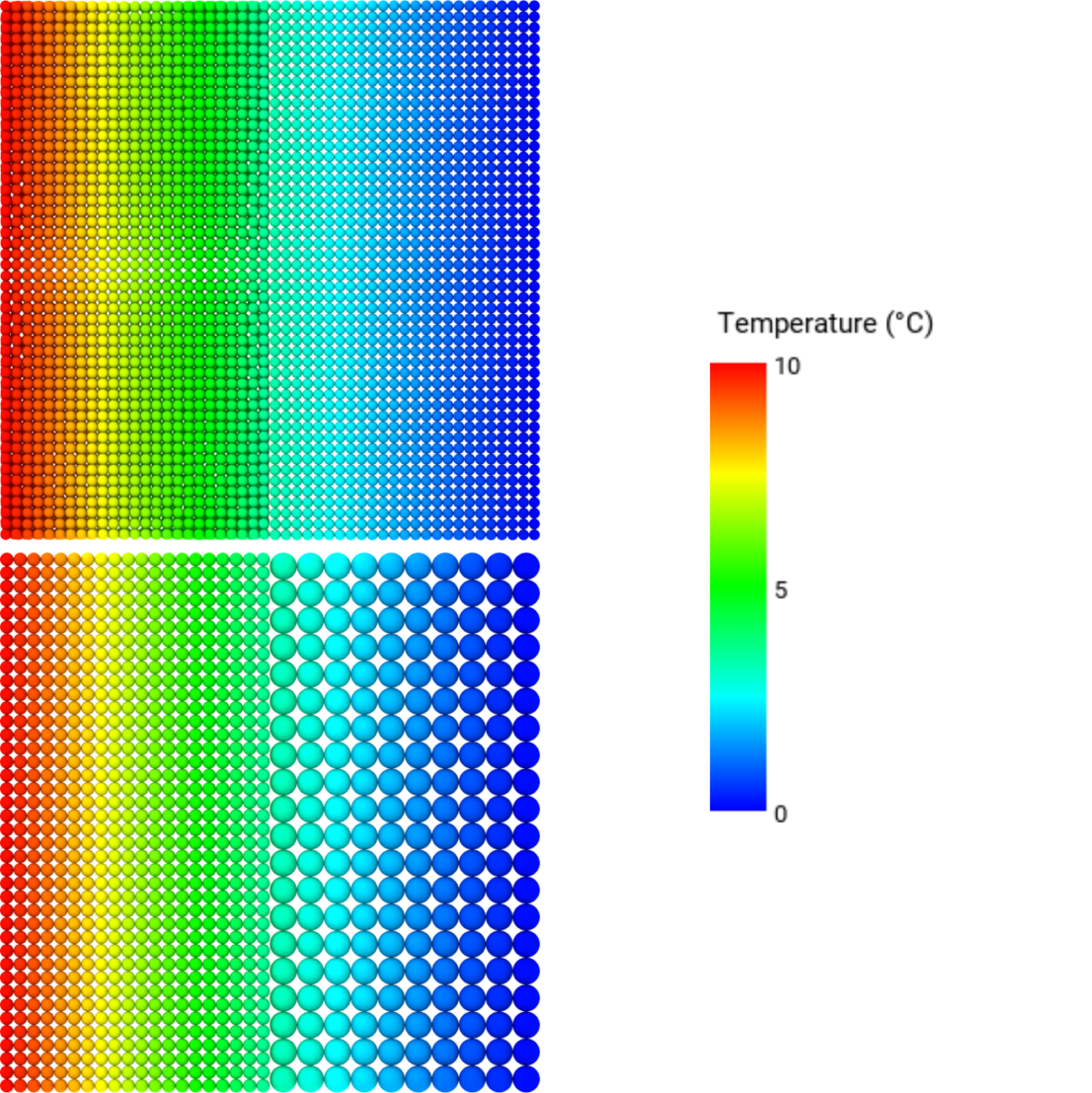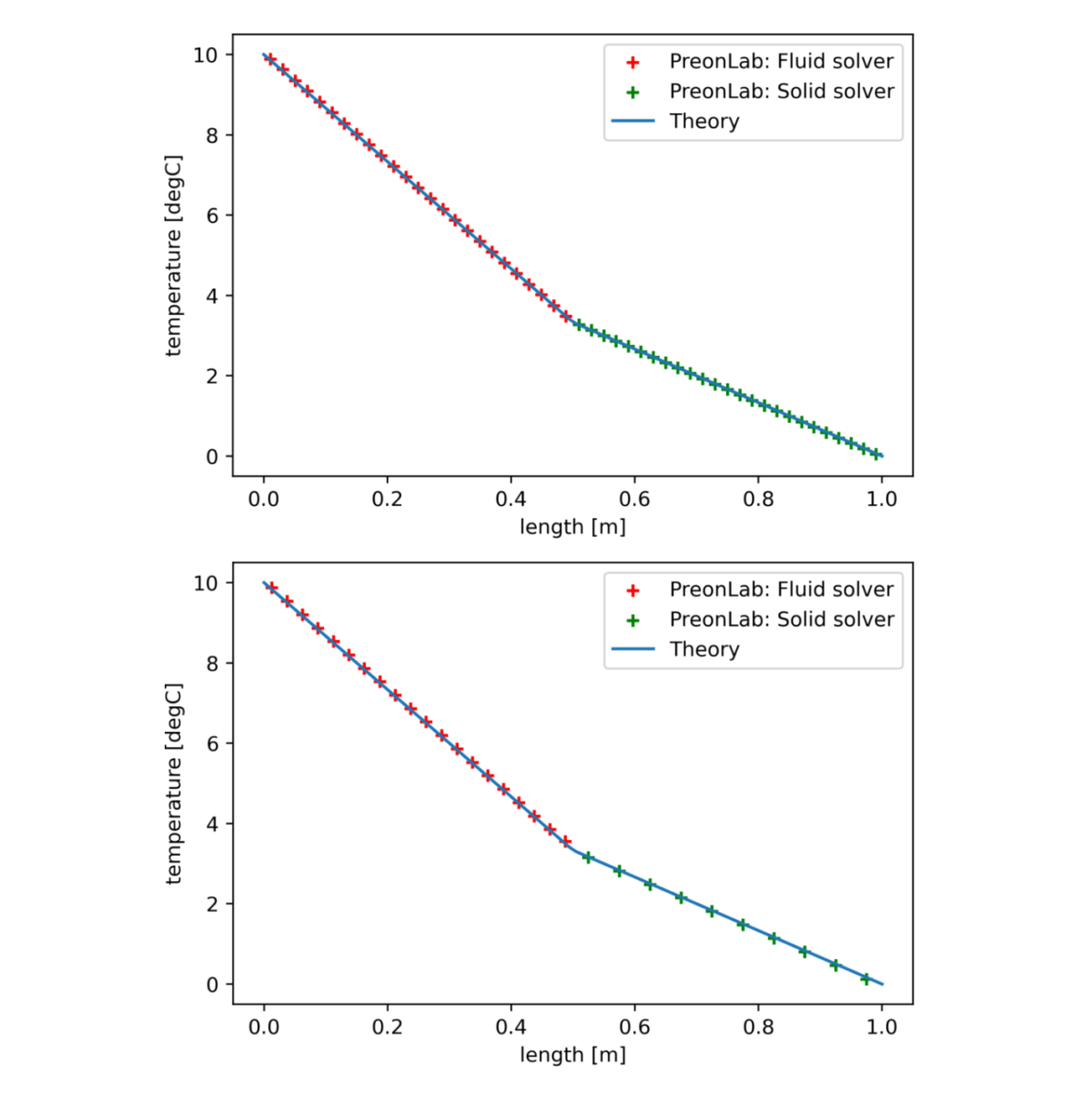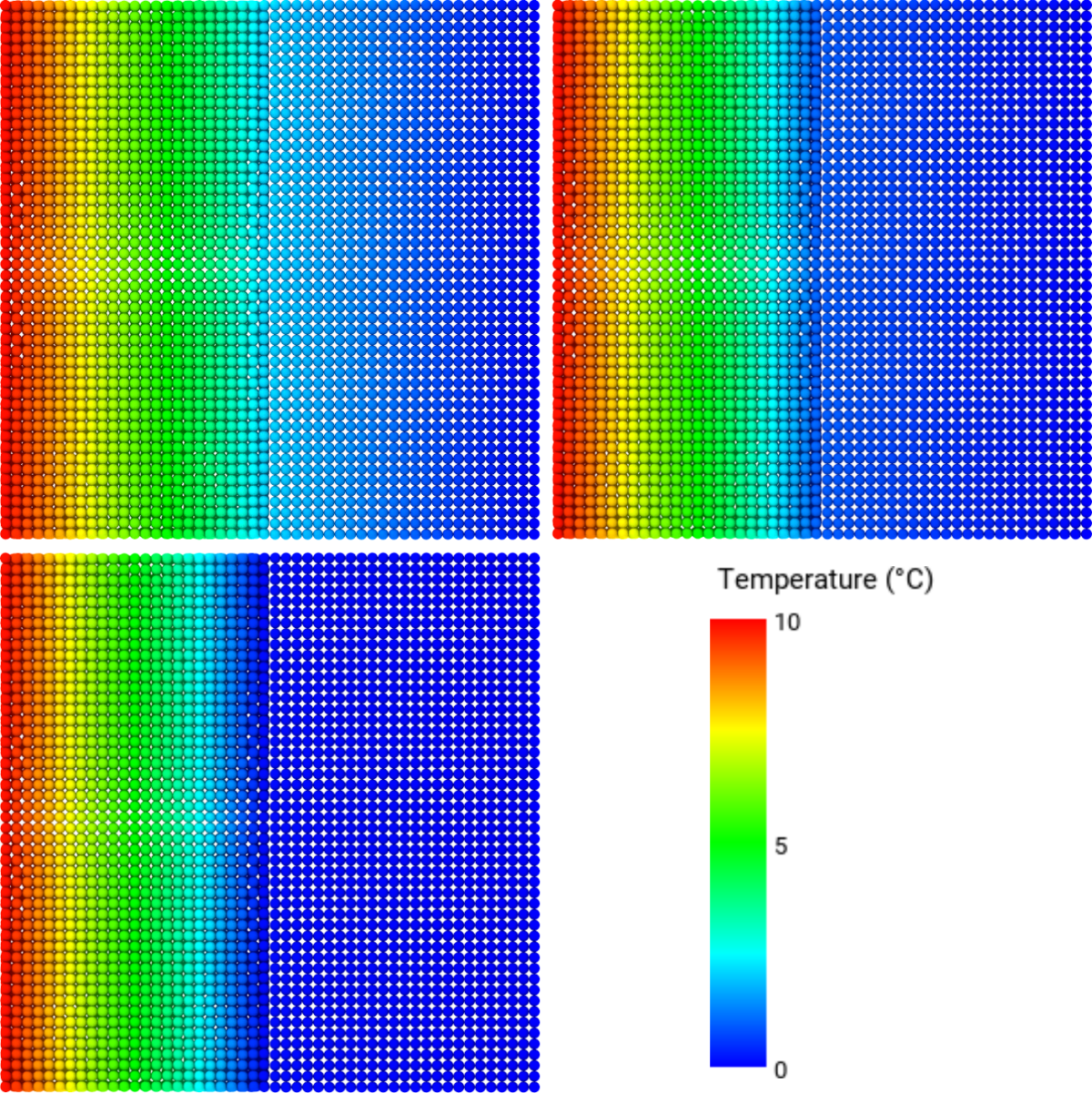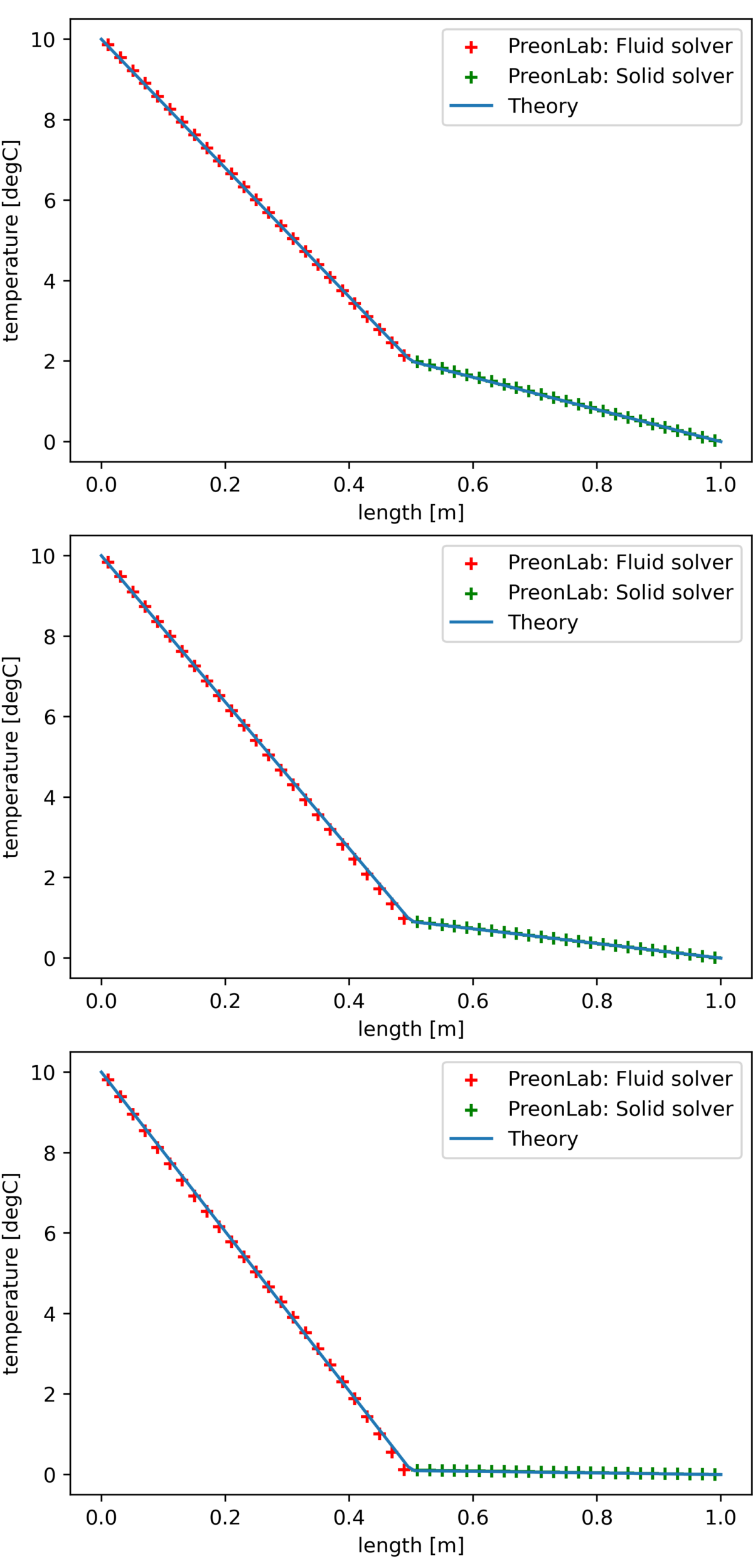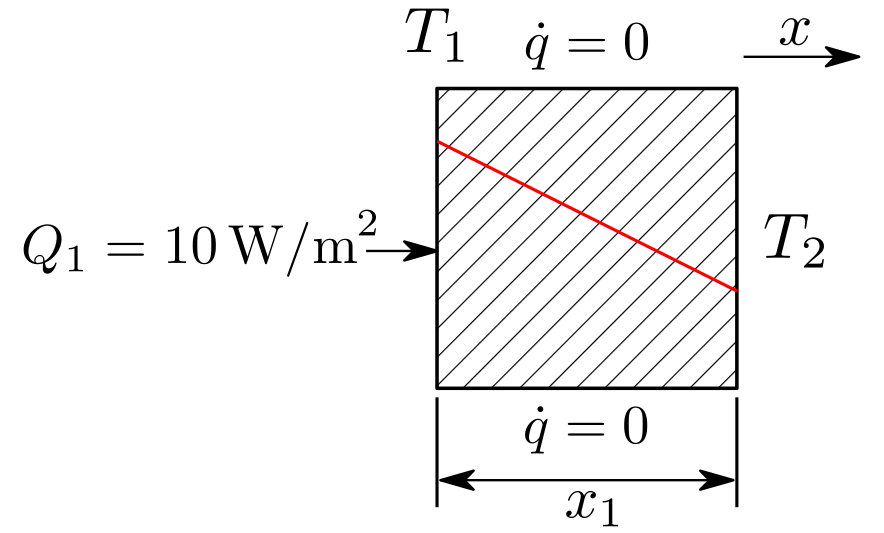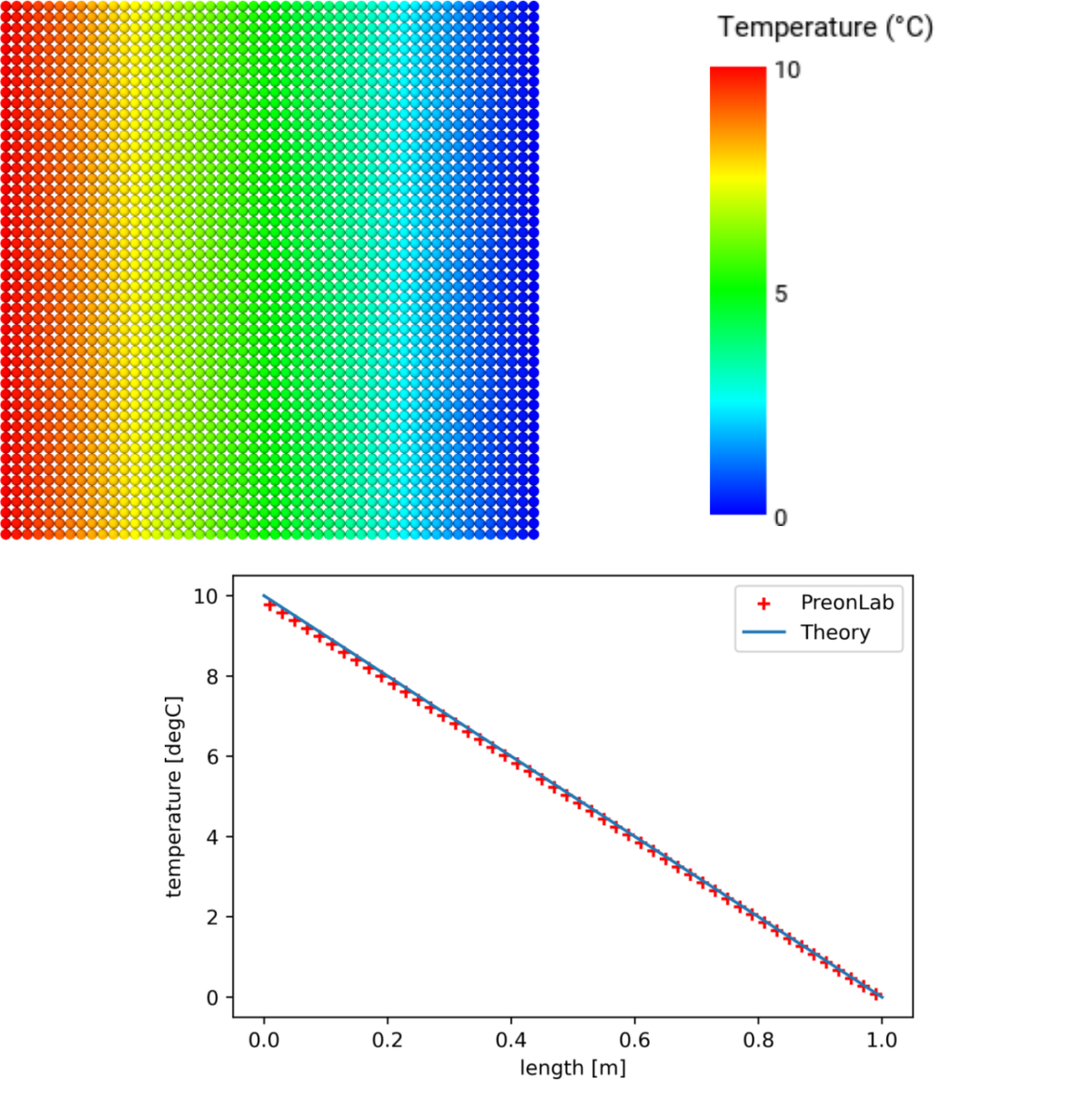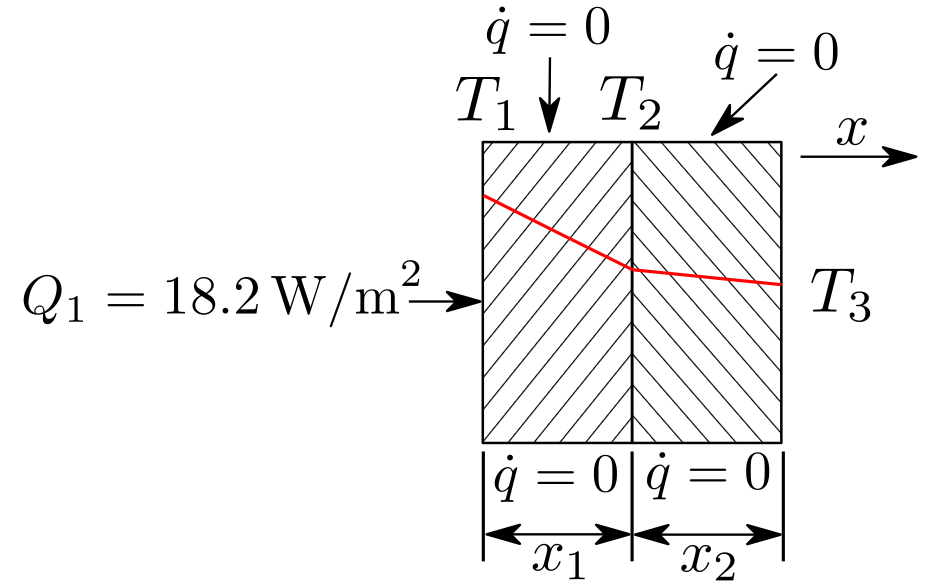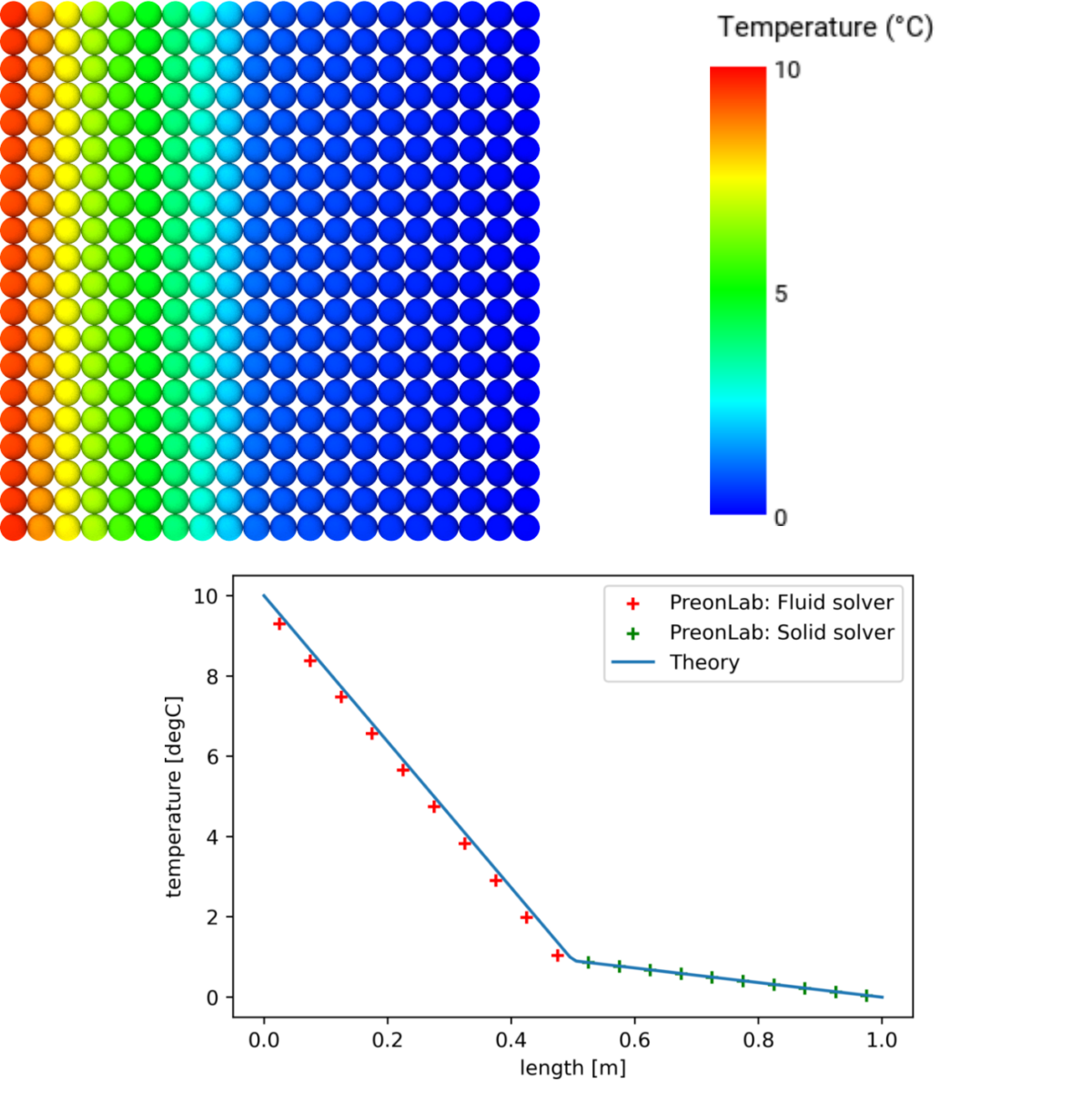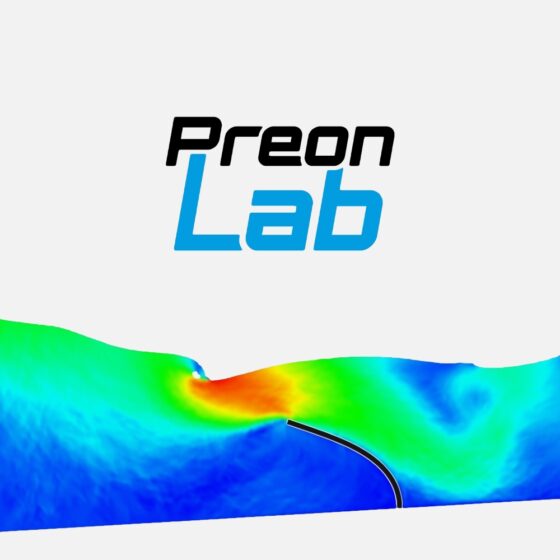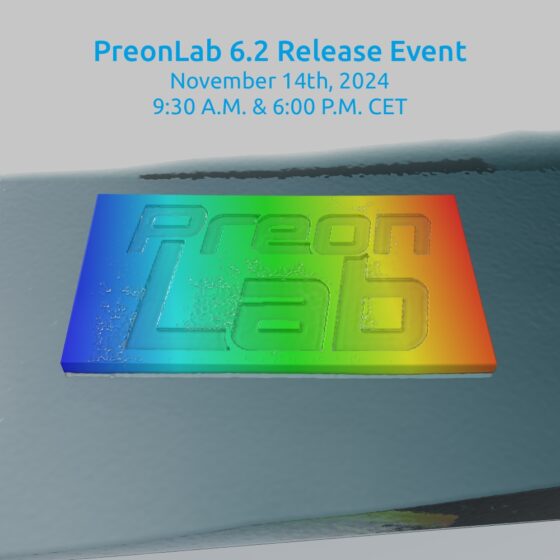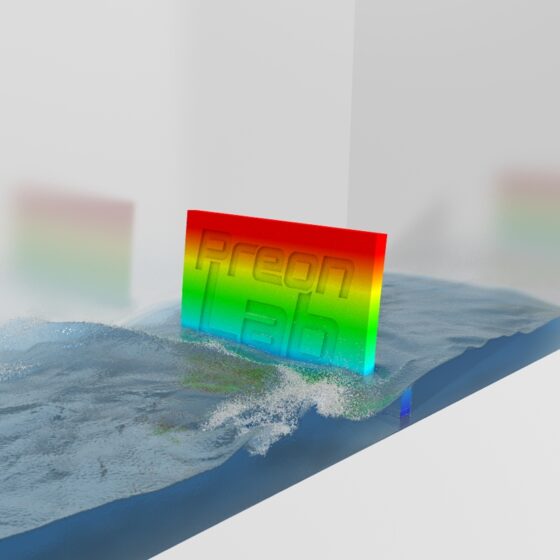In this case, the uniform heat flux is: $$ Q = \frac{(T_1 – T_3)}{\left[ \frac{x_1}{k_1 A} + \frac{x_2}{k_2 A}\right]} \hspace{1.5cm}(5)$$
where:
- \(k_1 = k_2 = 1\) W.m\(^{-1}\).K\(^{-1}\)
- \(x_1 = x_2 = 0.5\) m
- \(T_1 = 10\) °C
- \(T_3 = 0\) °C
The temperature at the interface of the two solvers, \(T_2\), can now be computed using: $$ T_2 = T_1 – \frac{Q x_1}{k_1 A}\hspace{1.5cm}(6) $$ For this configuration the resulting heat flux and interface temperature are: \(Q = 10\) W/m\(^2\) and \(T_2 = 5\) °C. Since the conductivity is uniform throughout the wall Equation 1 can be used again to obtain the theoretical temperature distribution. In PreonLab the left layer contains a fluid solver and the right layer contains a solid solver. For a uniform spacing of \(20\) mm the results from PreonLab are:
- \(Q_1 = 10.05\) W/m\(^2\) (\(0.5\) %)
- \(Q_2 = 9.24\) W/m\(^2\) (\(-7.6\) %)
- \(T_2 = 4.87\) °C (\(-2.6\) %)
PreonLab also allows setting independent spacing for each solver. This feature is tested here with the following spacings:
The temperature distribution for each configuration along the centerline of the wall is presented in Figures 5 and 6. The heat transfer between solvers behaves as expected.

